Cups or beakers such as those shown in Figures 65 (Vid. 44) and 66 (Vid. 45) are more important than they look. They were made at a critical transition in the history of domestic tableware. When objects like these were new, they were probably the first common, everyday drinking vessels made of glass that their owners possessed. Not too many years earlier, those owners would have held terracotta cups instead. In the technological revolution that glassblowing brought about in the first century—making glass affordable for everyone—humble little drinking glasses such as these were on the front line of change.
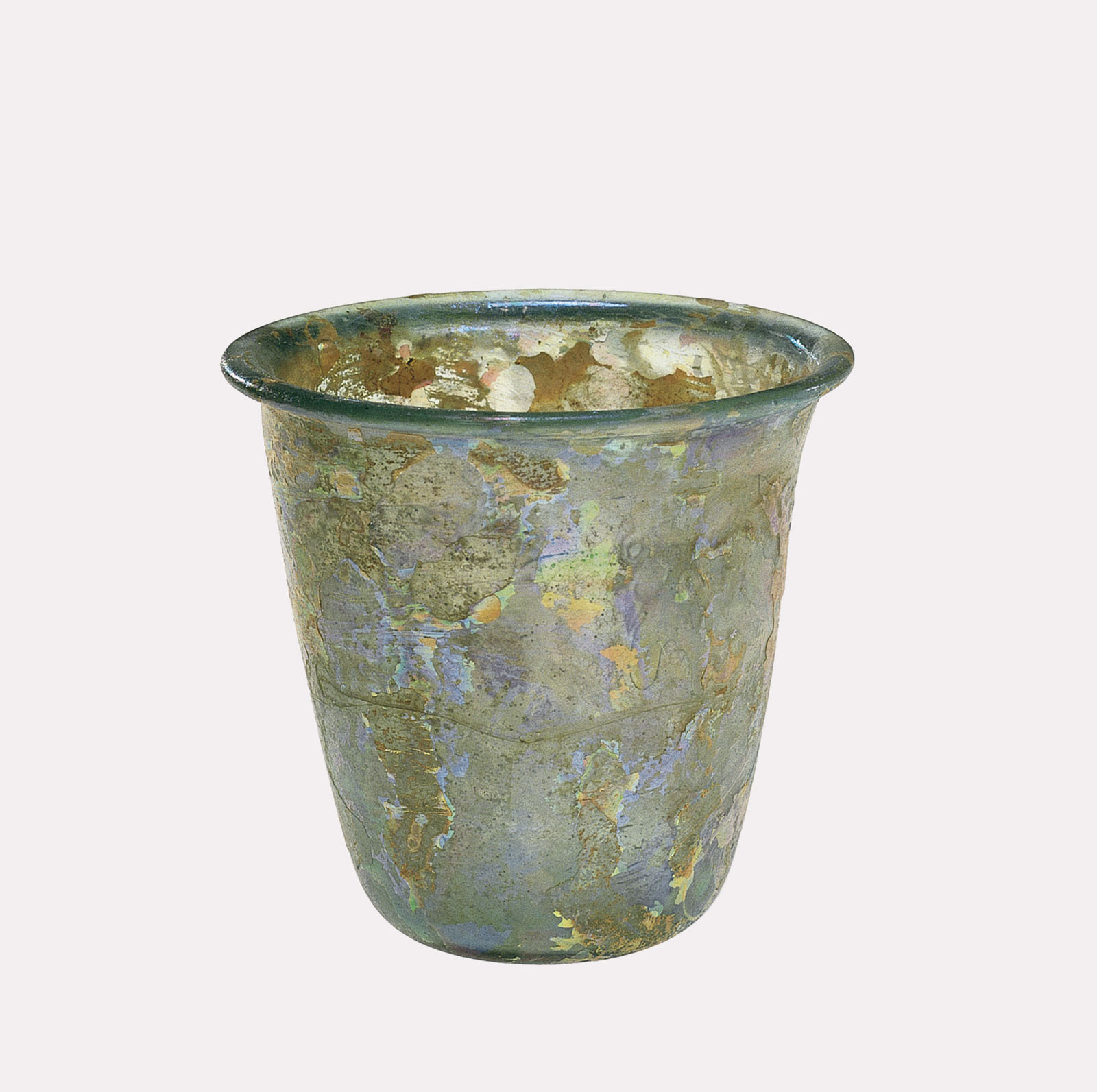
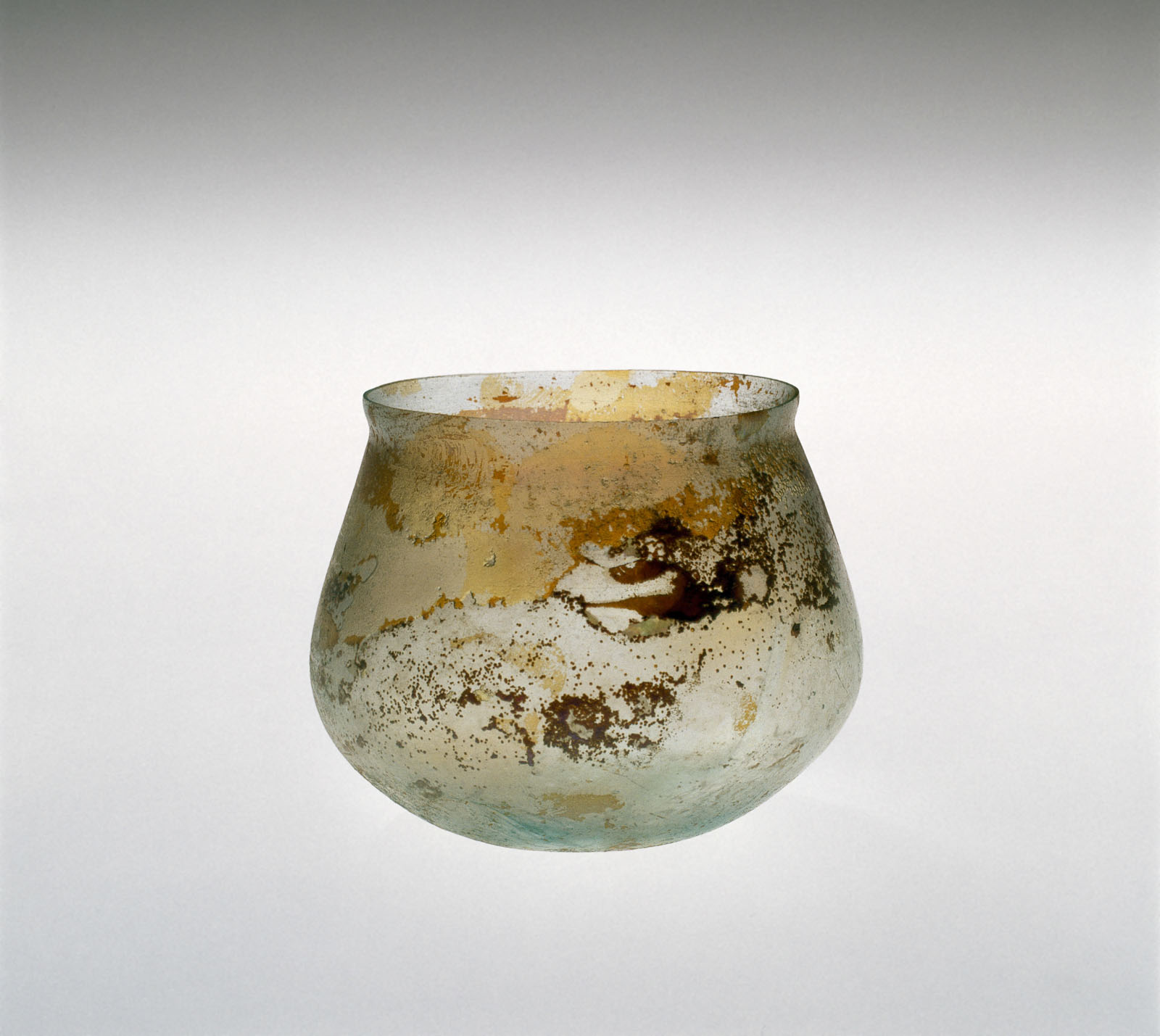
The fundamental differences between glass vessels made with furnace-finished rims (Vid. 5) and those made with cracked-off rims (Vid. 6) were discussed in Chapter 1. Suffice it to say here that the first of these processes requires much more skill than the second.
What we do not know today about the early years of glassblowing will, I hope, one day fill a book—when vastly more archaeological work and research have taken place. For now, we are faced with unconnected data from an array of places and times, a non-narrative punctuated with enigmas. The questions raised by the form called the modiolus (Fig. 67) make a good case in point.
As an example of the glassblower’s skill, the modiolus is impressive. For early glassblowers, with the exception of larger cameo vessels (see Chapter 1), modioli are among the largest in size. Their particular type of Roman foot is difficult to make; the slight constriction—no doubt unintended—just above the foot betrays the workers’ efforts. The conical sides of the vessel are straight and well controlled right up to the flared rim. The handle is well made and similar to those on the blue Ennion Cup (Fig. 22), which is believed to have been made in the middle of the first century. In short, the modioli are difficult and very skillfully made blown vessels (Vid. 46).
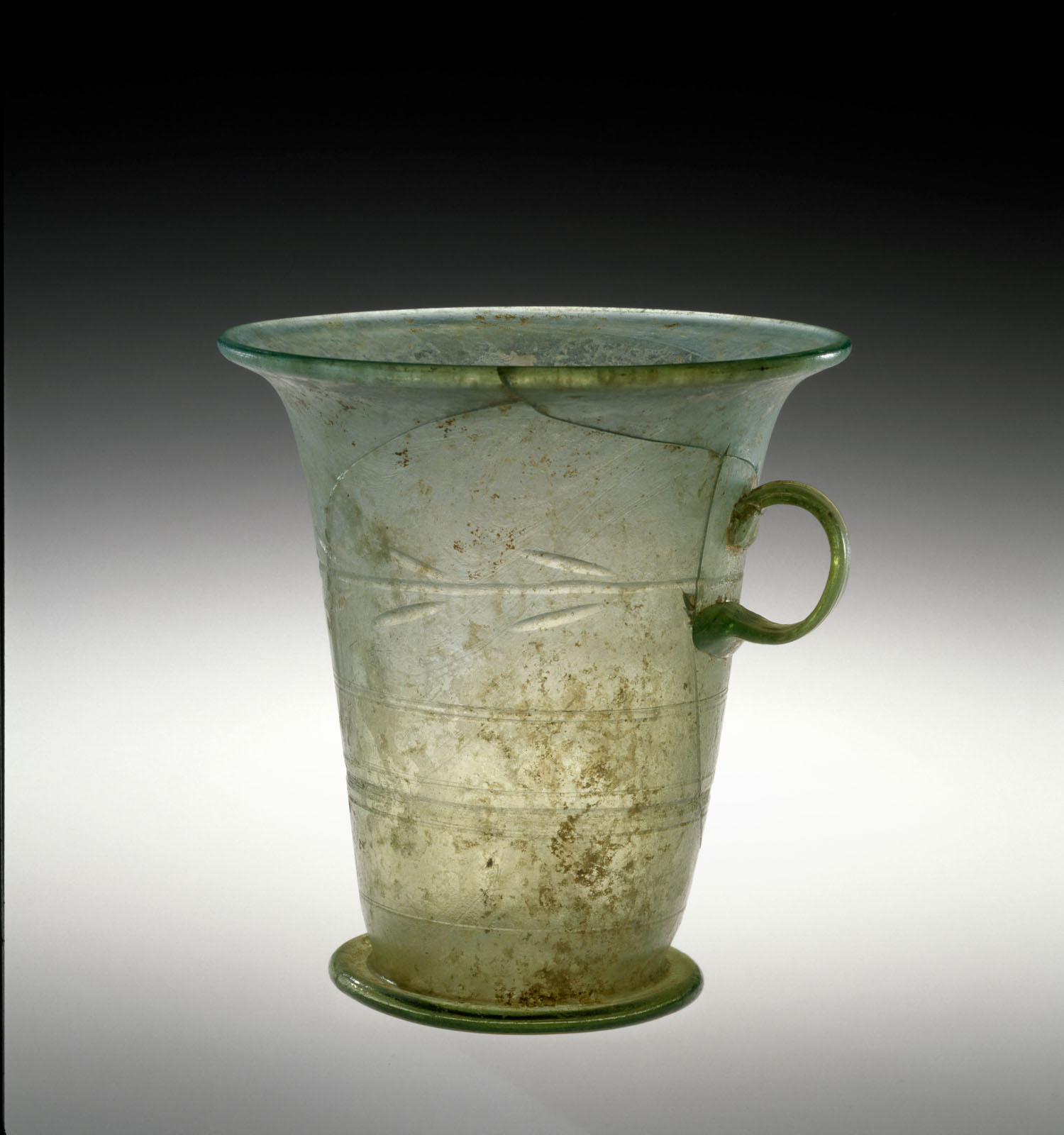
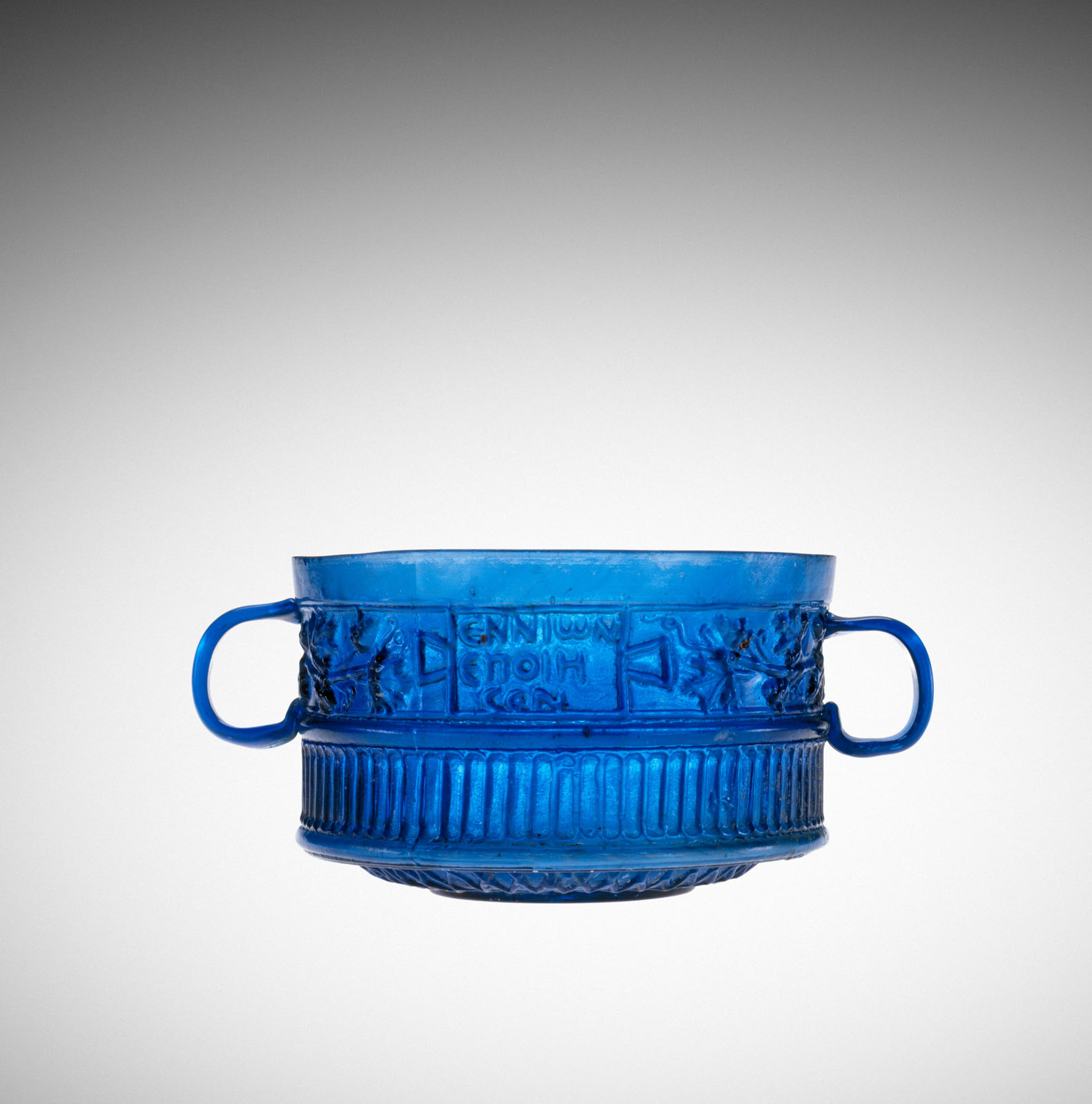
These objects are indeed enigmatic in that the earliest closely-datable fragments—assuming that the archaeologists are correct—were made about 40–10 B.C. My reaction to that combination of glassblowing accomplishment and early dating vacillates between “That is amazing!” and “That is impossible!” It is very difficult to reconcile those two conflicting conditions.
From considerably later—in fact, half a millennium later—a claw beaker or Rüsselbecher (Fig. 68), dating from the fifth or sixth century, is the first of two virtuoso showpieces to be considered next. Vessels decorated in this manner became a staple of medieval northern European glasshouses. Curiously, when such an object has become dirty through use, it is next to impossible to clean.
A particularly challenging aspect of the manufacture of this object and the next one is keeping the thin spiral trail near the rim hot enough to avoid cracking and breaking while the work on the lower half of the object is completed (Vid. 47).
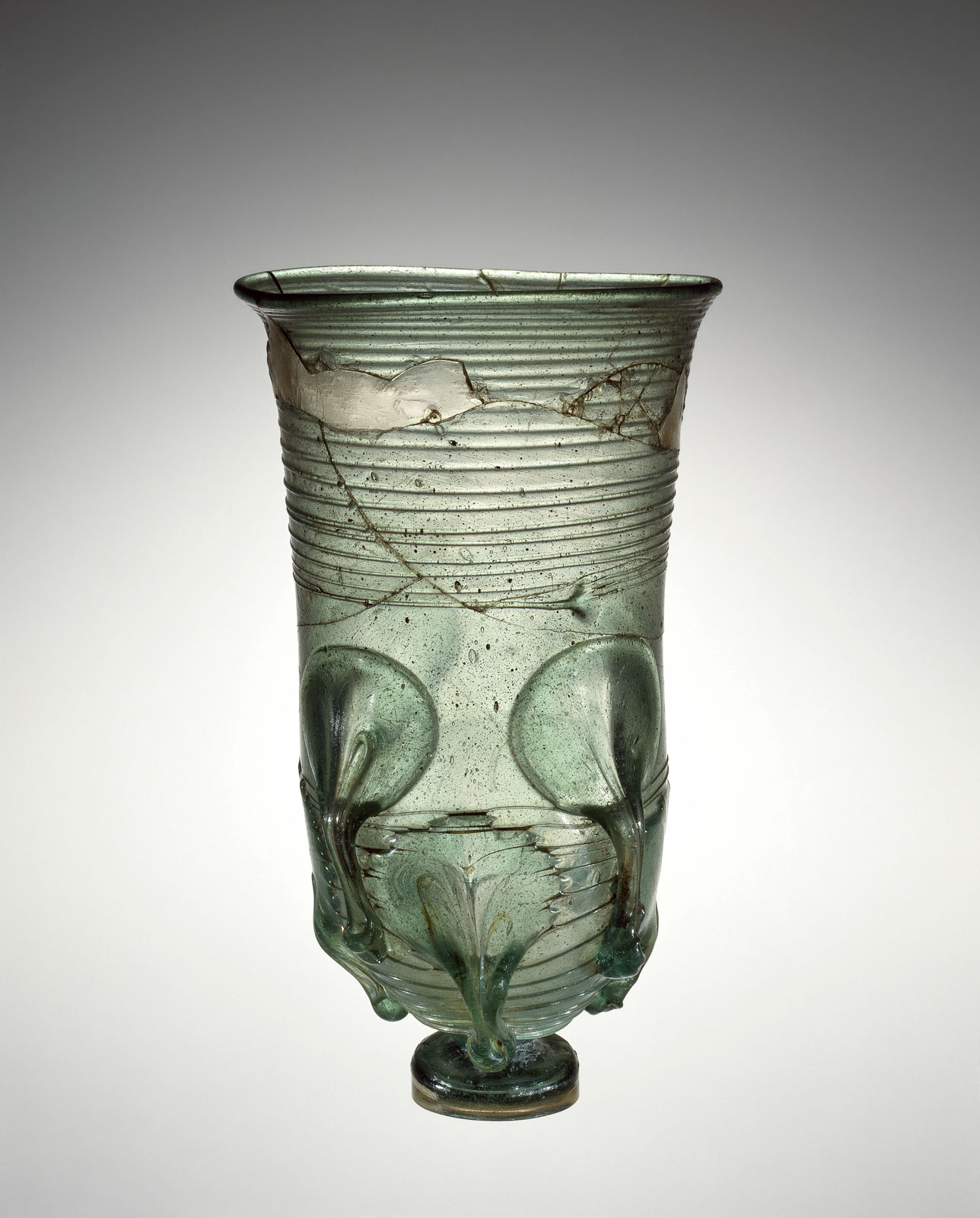
Cone beakers with vertically-oriented looped-thread decoration are usually identified as Kempston beakers (Fig. 69). They are so named because a fine example was found in Kempston, England, during the 19th century. Video 48 shows me working alone. I suspect that, in antiquity, at least one assistant would have been involved in the difficult manufacturing processes.
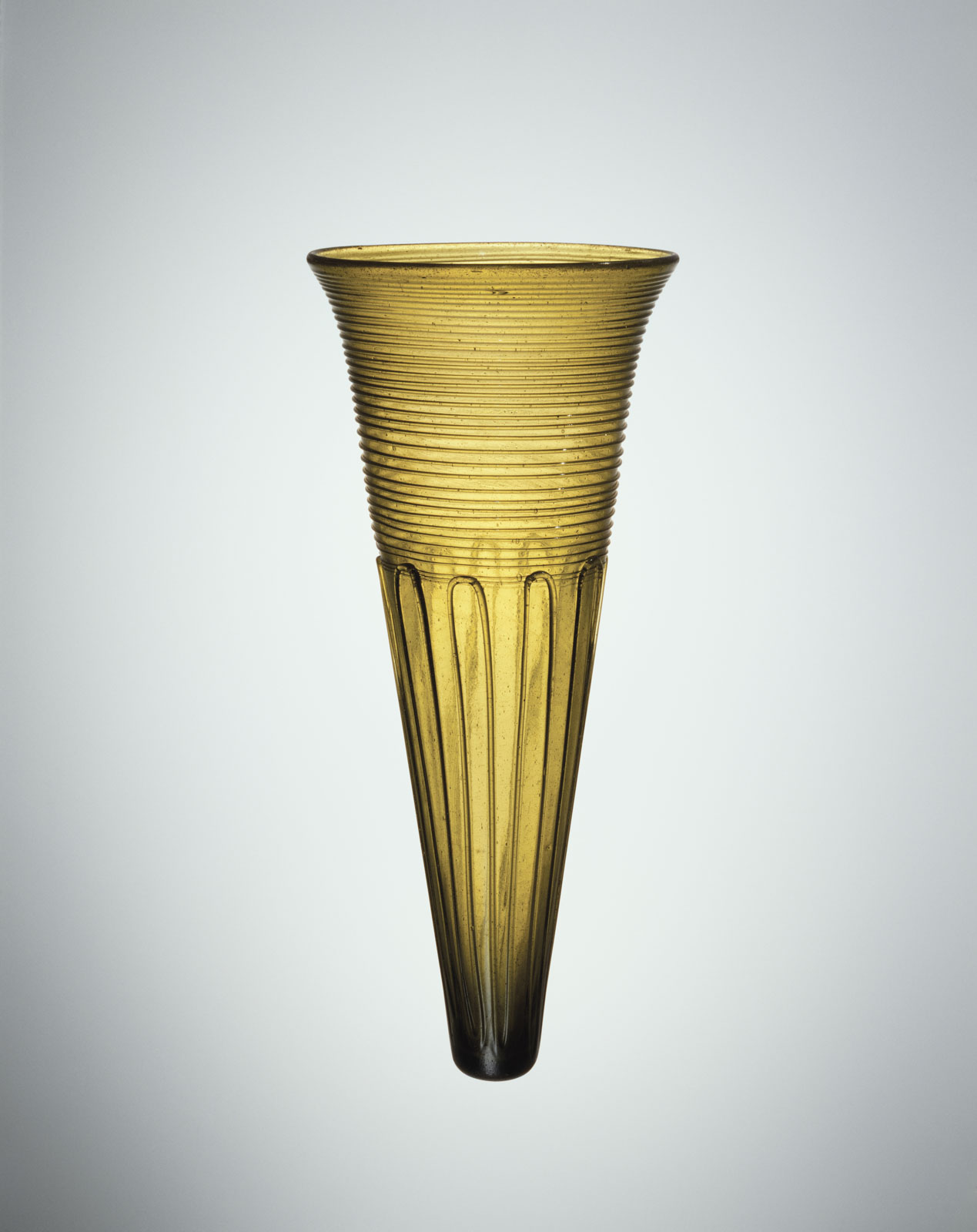
While giving tours of The Corning Museum of Glass, I am often asked, “What is the earliest wineglass, one with a stem?” If they happen to be on display, I point out the examples shown in Figures 70 and 71. Although it is important to know that, much earlier in Egypt, glassworkers made stemmed drinking vessels, these two Roman-period objects made by glassblowing exemplify the technological antecedents of the wineglasses of today. This is particularly true of the glass in Figure 71, with its addition of a solid stem.
In terms of its glassblowing process of manufacture, the first stemmed glass (Fig. 70) is the more interesting of the two examples. For me, it represents the start of a long tradition of “one-piece glasses,” as historical glass specialists often call them.

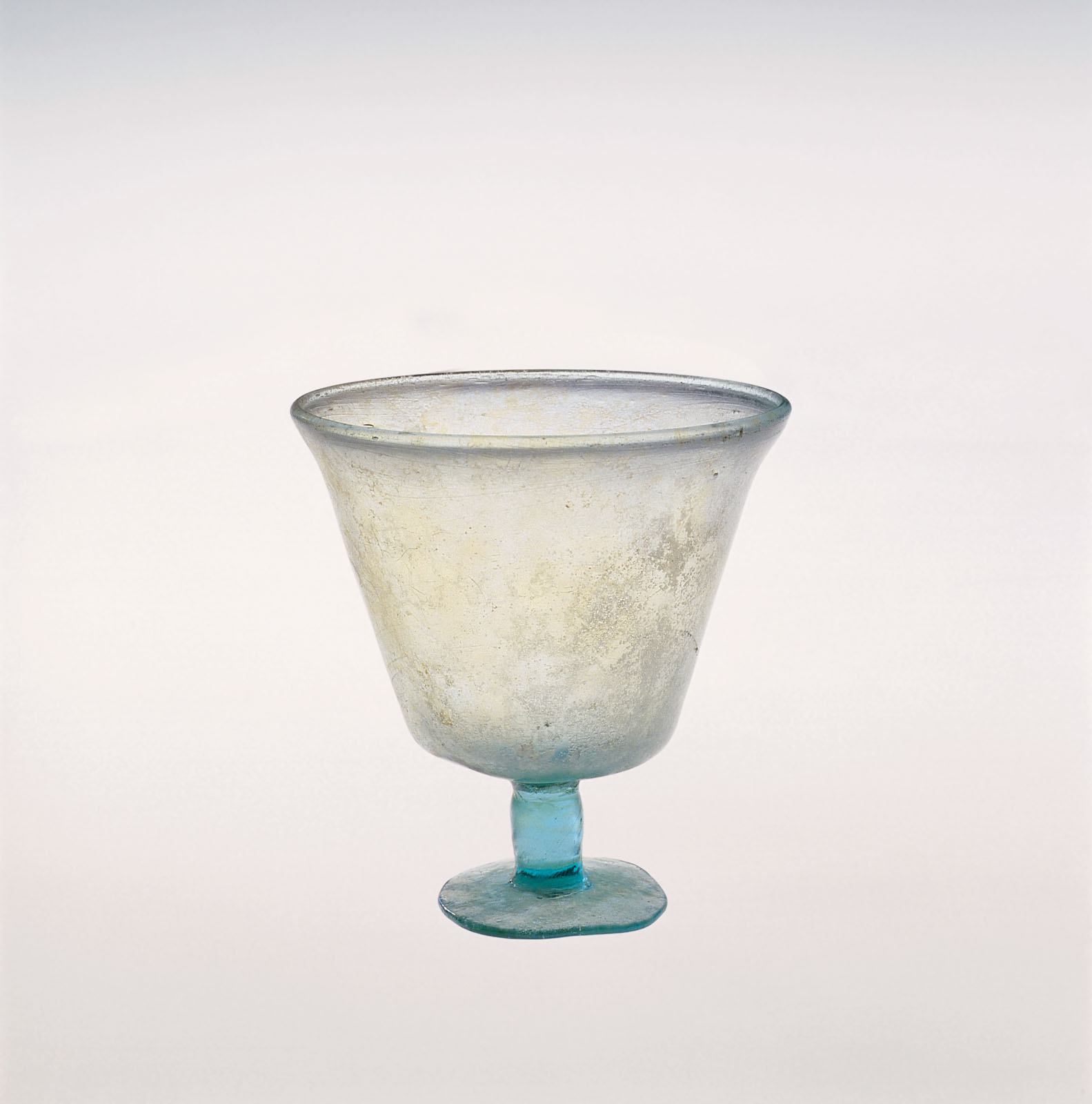
One-piece glasses are those in which multiple elements of the object are fashioned entirely from one bubble of glass. This technique has its beginnings in the Roman-foot process (Vid. 13). Ideally, at some point, the vessel wall is “folded” in such a way that the upper part of the bubble—that which is located nearest the blowpipe—is separated from the lower part by a barrier. The part that is above the barrier becomes the vessel; the part below the barrier becomes the stem and foot construction (Vid. 49).
In the second stemmed glass (Fig. 71), the glassblowing process is less interesting than that used to make the first object, but glasses such as this one are the closest early ancestors of contemporary wineglasses (Vid. 50). Although the rim of the glass shown here is furnace finished (see Chapter 1), contemporary glasses, such as those made by Riedel and Baccarat, always have cracked-off rims. Otherwise, the shorthand descriptions of the processes by which they are made are the same: “blown glass vessel with an added solid stem and a solid, pressed foot.”